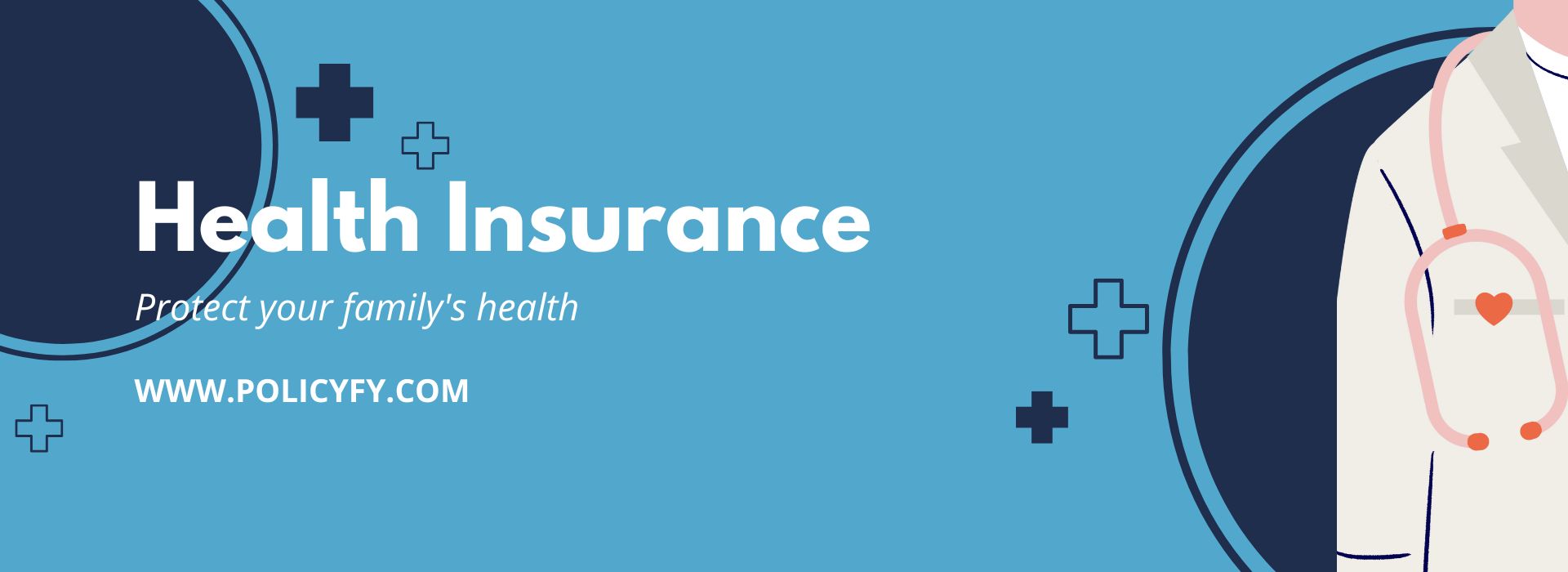Health Insurance for Pre-Existing Diseases: What You Must Know
🩺 Health Insurance for Pre-Existing Diseases: What You Must Know
Your complete guide to coverage, waiting periods, exclusions, and smart decisions
📘 Table of Contents
-
1. Introduction: Why This Topic Matters
2. What Are Pre-Existing Diseases (PEDs)?
3. Common PEDs in India
4. Does Health Insurance Cover Pre-Existing Diseases?
5. How Waiting Periods Work
6. Why Disclosing PEDs Is Critical
7. What Happens If You Hide a Pre-Existing Disease?
8. How to Choose the Right Policy for PEDs
9. Best Practices to Reduce Claim Rejection
10. Real-Life Examples
11. FAQs on Health Insurance and PEDs
12. Final Words
13. How Policyfy Helps
🧠 1. Introduction: Why This Topic Matters
With lifestyle diseases on the rise, over 1 in 4 Indians today have some form of pre-existing condition by the time they consider buying health insurance. From diabetes to hypertension, these conditions can make getting
the
right health cover challenging.
If you already have a condition, it doesn’t mean you can’t get insurance — it just means you have to be smart and honest in your choices.
In this blog, we’ll explain
everything you need to know about pre-existing diseases, how insurers treat them, and how you can protect your health and finances with the right plan.
❓ 2. What Are Pre-Existing Diseases (PEDs)?
A Pre-Existing Disease is defined by IRDAI (Insurance Regulatory and Development Authority of India) as:
“Any condition, ailment, injury, or disease that is diagnosed or treated within 48 months (4 years) before the date of policy issuance.”
In simple terms, if you were:
-
Diagnosed
Treated
Had symptoms of a disease
…within the last 4 years, it qualifies as a PED.
🧬 3. Common PEDs in India
Some of the most common pre-existing diseases among insurance buyers include:
| Disease | Age Group (Typically) |
|---|---|
| Diabetes | 30–60 |
| Hypertension | 35+ |
| Asthma | All ages |
| Thyroid disorders | 25–45 (mostly women) |
| PCOD/PCOS | 18–35 (mostly women) |
| High cholesterol | 30+ | Depression/Anxiety | 18–50 |
| Arthritis or joint issues | 45+ |
You may not even realize some of these qualify as PEDs if symptoms were minor or controlled. But insurers evaluate all medical history before offering a policy.
🩺 4. Does Health Insurance Cover Pre-Existing Diseases?
✅ Yes, But With Conditions:
Almost all health insurance providers
do cover pre-existing diseases — but not from Day 1.
Here’s how it works:
-
Waiting period: 1–4 years depending on the insurer
Premium loading: Some insurers may charge slightly higher premiums
Coverage limitations: Claims related to that PED are not allowed during the waiting period
Example:
You have diabetes. You buy a policy in June 2025 with a
3-year PED waiting period. If you’re hospitalized for a diabetes-related complication in 2026, your claim will be rejected. But if it happens in 2029, you’ll be covered.
🕒 5. How Waiting Periods Work
There are typically three kinds of waiting periods:
| Type of Waiting Period | Duration | Applies To |
|---|---|---|
| Initial Waiting Period | 30 days | Applies to all illnesses (except accidents) |
| Pre-Existing Disease (PED) | 1 to 4 years | Coverage starts after this duration |
| Specific Illness Waiting | 1 to 2 years | Hernia, cataract, knee replacements, etc. |
Tip: Some insurers offer reduced waiting periods with add-ons or higher premium. Worth it if you have active conditions.
📣 6. Why Disclosing PEDs Is Critical
Many people don’t declare their past health issues out of fear of:
-
Policy rejection
Higher premium
Exclusions
This is a huge mistake.
Insurers Can:
-
Reject your claim if they find out later
Cancel your policy under fraud clause
Ban you from buying future insurance
What to Disclose:
-
Any surgeries
Diagnosed conditions (even minor)
Ongoing medications
Symptoms that led to checkups
Full disclosure = Better protection and peace of mind.
⚠️ 7. What Happens If You Hide a Pre-Existing Disease?
Insurers conduct medical underwriting before issuing policies. If they discover your past medical history during:
-
Pre-policy check-up
Hospitalization
Pharmacy records
Lab report
…your entire claim may be denied under the clause of
"material misrepresentation."
Even worse, they can terminate your policy permanently.
Moral: Hiding PEDs is not just risky — it’s self-sabotage.
✅ 8. How to Choose the Right Policy for PEDs
When you already have a condition, the goal is to
minimize the risk of rejection and maximize benefits. Here's how:
Key Factors to Compare:
-
1. Waiting Period for PEDs
Some insurers offer 2 years vs. others who need 4 years
2. Cashless Hospital Network
Go with providers that include your hospital
3. Coverage Amount (Sum Insured)
₹5–10 lakh minimum for PEDs like diabetes, asthma
4. Claim Settlement Ratio
90%+ is ideal
5. Inclusions & Exclusions
Carefully read what your plan doesn’t cover
6. Free Health Checkups
To track your condition without extra cost
Optional Add-ons:
-
Critical illness cover
OPD cover (especially for diabetes/hypertension follow-ups)
Reduction in PED waiting period (some plans offer this as add-on)
Platforms like Policyfy make this comparison super easy.
✅ 9. Best Practices to Reduce Claim Rejection
-
1. Be Honest during proposal
2. Keep Medical Records handy
3. Take Pre-Policy Medical Checkup if advised
4. Understand Your Policy Clauses – especially waiting periods
5. Renew Policy On Time – continuity helps with PED coverage
6. Use the Same Insurer Long-Term to enjoy NCB & waiting period benefits
7. Inform Insurer During Any Hospitalization
Tip: If your condition is well-managed (normal BP, controlled sugar), insurers are less likely to penalize you.
📌 10. Real-Life Examples
🎯 Case 1: Diabetic but Insured Smartly
Kavita, 38, had diabetes for 3 years. She declared it in her proposal. Her insurer accepted the policy with a 3-year waiting period. In Year 4, she had a diabetic complication and the claim of ₹1.2 lakh was settled smoothly.
🎯 Case 2: Asthma Not Declared
Rajesh, 45, didn’t mention his childhood asthma. He needed hospitalization for a respiratory infection. The insurer found old prescriptions and
rejected the claim, citing non-disclosure.
Lesson: Declaring PEDs may slightly increase premium, but guarantees peace of mind.
❓ 11. FAQs on Health Insurance and PEDs
Q1. Can I get insurance if I have multiple PEDs?
Yes. Many insurers offer policies for people with 2–3 controlled conditions. Premium and terms may vary.
Q2. Can I reduce my PED waiting period?
Yes. Some insurers offer riders to reduce from 4 to 2 years. You may need to pay extra.
Q3. Can I claim during the waiting period?
Yes — but only for issues unrelated to the PED. Example: If you have thyroid and break your leg, the accident claim will be covered.
Q4. Will the insurer always load premiums for PEDs?
Not always. If your condition is mild, well-controlled, and declared honestly, you may get standard rates.
Q5. What if I develop a condition after buying the policy?
It won’t be treated as PED. You’ll be fully covered after the initial 30-day waiting period.
🧠 12. Final Words
Having a pre-existing condition does not disqualify you from buying health insurance — but it does require planning.
The earlier you buy, the sooner you cross waiting periods.
The more honestly you disclose, the fewer problems you'll face at claim time.
“The best time to buy health insurance was yesterday. The second-best time is today.”
🏥 13. How Policyfy Helps You Choose the Right Cover
At Policyfy, we make it easy to:
-
✅ Compare insurers who accept pre-existing diseases
✅ View waiting periods side-by-side
✅ Get personalized support during the claim process
✅ Track PED coverage and plan renewals online
✅ Understand exclusions and riders in simple language
Buy smart. Declare right. Stay covered.
👉 Visit Policyfy Health Insurance Page today.






